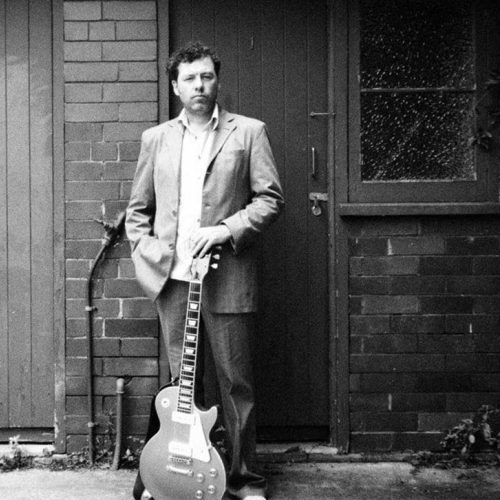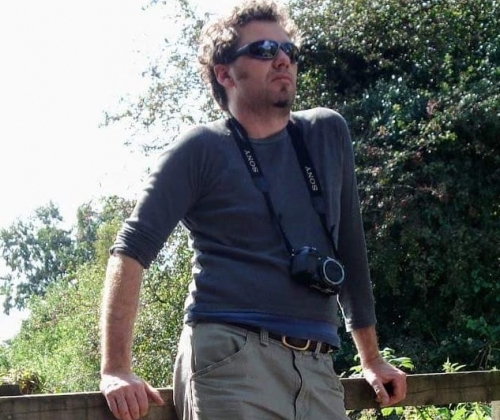
Matthew Clarke was born in East Molesey, Surrey in 1963, where he grew up. He completed a BA Hons Fine Art (Painting), at the Birmingham School of Art, 1986 to 1989 (now part of Birmingham City University). A Post Graduate Certificate in Art Education from the University of Brighton followed in 1997.
Matthew Clarke moved to Australia where he held several exhibitions before he returned to the UK. A keen cyclist and surfer, he led life to the full. Once he reported:
“I nearly drowned today, trying to go out into surf that was too big for me. I really felt momentarily on the edge of my life. After I got to the beach, I felt so grateful to be alive and everything looked beautiful. I may make some reckless choices but they do serve to illuminate the majesty of existence.”
Matthew also became an accomplished amateur guitarist. As testament to his creativity, he even formed a band in Australia called Blue Buffalo, with a site on Fandalism and numerous posts of his musical performances on YouTube.
Matthew died in 2020.
2005
Solo show, Red Door Gallery, Summer Hill, Sydney
2003
Urban Eye, Streets Gallery, Turella, Sydney
2002
Waverly Art Prize Exhibition, Sydney
Liverpool City Art Prize Exhibition, Sydney
1999
Phoenix Art Gallery, Brighton UK
Lewes Contemporary Art Fair, Lewes UK
1998
Star Gallery, Lewes UK
1995
Norwich Artists Group, Norwich UK
Matthew Clarke’s Still Lifes are born from the meditative process of painting the same subject matter over and over again. The results are far from monotonous as each piece attests to the change of time, light, mood and visual playfulness of the Artist.
Everyday objects assume a monumentality when juxtaposed with each other and set against simple geometric backgrounds. The paint is thick and generous and the colours are often rich and complementary.
Objects range from soft/textural to hard/shiny with wood, metal, pottery and plastic surfaces, there is a repetition of elliptical shapes creating a unifying effect and a fairly high viewpoint gives the opportunity to see the diagonal lines, leading the eye in and creating pyramidal compositions with strong verticals and horizontals. When cast shadows are used, they are integral to the compositions and when they are not there, they facilitate a two-dimensional abstract pattern of shapes and colours. Of his approach to his art work, Matthew once wrote: “I think it is often about getting out of the way and letting it happen.”
In Search of Sublime Truth: A Retrospective Exhibition by Matthew Clarke
Matthew had been working on an Arts Event in Brighton that would have involved both him and his painting, for many months before he became incapacitated through his illness. The focus and nature of the event has naturally changed but the retrospective exhibition is a way of keeping its original spirit. Together with family, friends and colleagues, the decision was taken to hold the exhibition, which would include not just his art but also mention of his work, life and values.
Like many in his situation, Matthew did not gain as much recognition as he deserved in his lifetime. This exhibition not only honours his memory but continues his work. The title of the exhibition, In Search of Sublime Truth, comes from a phrase he used to explain what he was seeking.
His Modern Realism pieces are greatly influenced by Giorgio Morandi and, to some extent by Paul Cezanne. The exhibition will comprise some 50 pieces, including oils, drawings and watercolours.

Matthew Clarke was not only a talented artist but someone with a vision. He cared deeply for global issues such as the damage to our ecosystem and social justice.
He was an environmental activist and member of the Green Party, and sought to put his ideals into practice in his life and work.
Matthew said of his own art and life:
“I’m left with the feeling that I also am at the forefront of experience if you like. Perhaps I didn’t want my journey to be into the unknown but I realise now that for all of us it must be. The trick, I suppose is to accept that.”